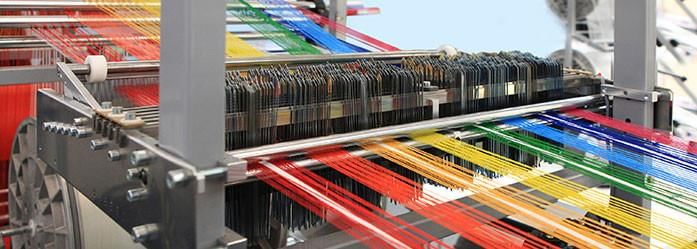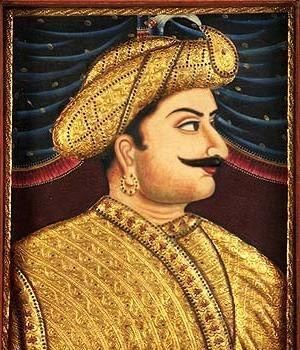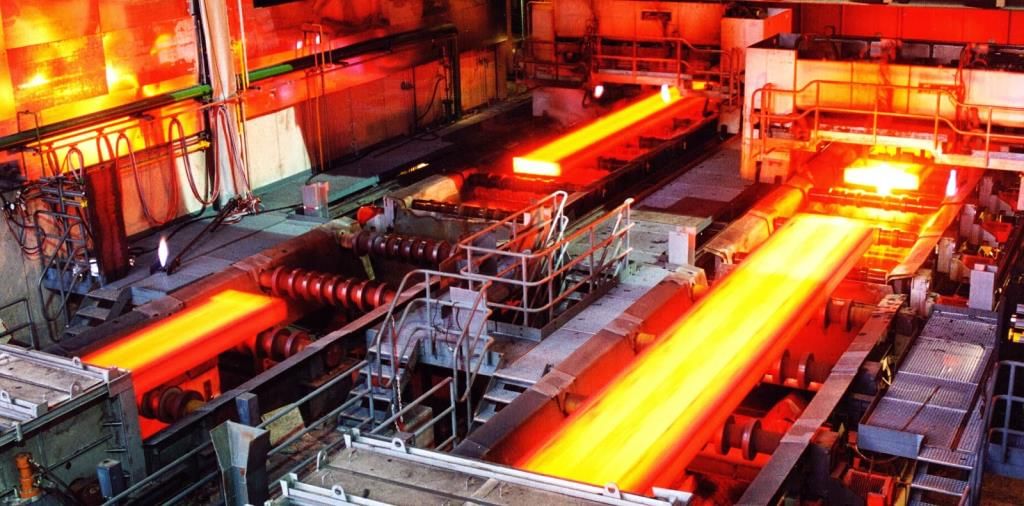Class 8 Exam > Class 8 Notes > History for Class 8 > NCERT Solutions: Weavers, Iron Smelters & Factory Owners - 2
NCERT Solutions for Class 8 History - Weavers, Iron Smelters and Factory Owners - 2
NCERT Solution
Q 1. Mention the two industries which were crucial for the industrial revolution in England.
Ans. The two industries which were crucial for the industrial revolution in England:-
- Textiles and
- Iron and Steel.
Q 2. What made Britain the foremost industrial nation in the 19th century?
Ans. Merchandised production of cotton textiles made Britain the foremost industrial nation in the 19th century.
Q 3. Why Britain was refers to as the workshop of the world?
Ans. Britain was referred to as the workshop of the world as its iron & steel industries started growing from 1850s and later had success. So many started buying and selling iron from Britain in greater quantities and thus it was given the title of ‘work shop of world’.
 Fig:Muslin.
Fig:Muslin.
Q 4. What kinds of cloth had a large market in Europe?
Ans. Chintz, silk textiles, Muslin, jamdani and calico.
Q 5. What is Jamdani?
Ans. Jamdani is a fine Muslin on which decorative motifs are women on the loom, typically in grey and white. Often a mixture of cotton and gold thread was used.
Q 6. What is bandanna?
Ans. The word bandanna now refers to any brightly coloured printed scarf for the neck or head.
Originally, the term derived from the word “bandhana” (Hindi for tying), and referred to a variety of brightly coloured cloth produced through a method of tying and dying.
Q 7. Who are Agaria?
Ans. The group of men and women carrying basket loads of irons ore. These groups were the Agarias .
Q 8. Write a short note on Calico Act.
When the Portuguese first came to India in search of spices they landed in Calicut on the Kerala coast in south – west India.
The cotton textiles which they took back to Europe, along with the spices, came to be called “calico” (derived from Calicut), and subsequently calico became the general name for all cotton textiles.
By the early eighteenth century, worried by the popularity of Indian textiles, wool and silk makers in England began protesting against the import of Indian cotton textiles.
In 1720, the British government enacted a legislation banning the use of printed cotton textiles –chintz – in England. This Act was known as the Calico Act.
Q 9. Mention the two technological innovations which revolutionized cotton productions.
Ans. Competition with Indian textiles also led to a search for technological innovation in England:-
- In 1764, the spinning jenny was invented by John Kaye which increased the productivity of the traditional spindles.
- The invention of the steam engine by Richard Ark Wright in 1786 revolutions cotton textile weaving.
Q 10. How did European companies traded with India?
European trading companies – the Dutch, the French and the English made enormous profits out of this flourishing trade.
These companies purchased cotton and silk textiles in India by importing silver.
When the English East India Company gained political power in Bengal, it no longer had to import precious metal to buy Indian goods. They collected revenues from peasants and zamindars in India, and used this revenue to buy Indian textiles.
Q 11. Why did the wool and silk producers protest against the import of Indian textiles in the early 18th century?
Ans. By the early eighteen century, worried by the popularity of Indian textiles, wool and silk makers in England began protesting against the import of Indian cotton textiles as they were not able to sell their products.
Q 12. What problems did the Indian textile industry face in the early years of its development?
Ans. The development of cotton industries in Britain affected textile producers in India in several ways.
1. Indian textiles now had to comply with British textiles in the European and American markets. Exporting textiles to England also became increasingly difficult since very high duties were imposed on Indian textiles imported into Britain.
 Fig: Textile industry.
Fig: Textile industry.
2. By the beginning of the nineteenth century, English made cotton textiles successfully outsets Indian goods from their traditional markets in Africa, America and Europe.
3. Thousands of weavers in India were now thrown out of employment.
4. Bengal weavers were the worst hit. English and European companies stopped buying Indian goods and their agents no longer gave out advances to weavers to secure supplies. Distressed weavers wrote petitions to the government to help them.
5. The textile factory industry in India faced many problems. It found it difficult to compete with the cheap textiles imported from Britain.
6. In most countries, governments supported industrialization by imposing heavy duties on imports. This eliminated competition and protected infant industries.
IRON SMELTERS
Q 13. Why was the sword of Tipu Sultan very popular?
1. Tipu Sultan ruled Mysore till 1799, fought four wars with the British and died fighting with his swords in his hand. Fig: Tipu Sultan.2. The swords had an incredibly hard and sharp edge that could easily rip through the opponent’s arm our.
Fig: Tipu Sultan.2. The swords had an incredibly hard and sharp edge that could easily rip through the opponent’s arm our.
 Fig: Tipu Sultan.2. The swords had an incredibly hard and sharp edge that could easily rip through the opponent’s arm our.
Fig: Tipu Sultan.2. The swords had an incredibly hard and sharp edge that could easily rip through the opponent’s arm our. 3. This quality of swords came from a special type of high carbon steel called wootz which was produced all over South India.Wootz steel when made into swords produces a very sharp edge with a flowering water pattern.
Q 14. Why did the iron smelting decline in the later years?
- The iron smelting decline in the later years because the swords and amours making industry died with the conquest of India by the British and imports of iron and steel from England displaced the iron and steel produced by craft persons in India.
- Production of wootz steel required a highly specialized technique of refining iron. But iron smelting in India was extremely common till the end of the nineteenth century.
- In most villages, furnaces fell into disuse and the amount of iron produced came down.
- One reason was the new forest laws when the colonial government prevented people from entering the reserved forests, the iron smelters could not find wood for charcoal. They could not get iron ore.
- Defying forest laws, they often entered the forests secretly and collected wood, but they could not sustain their occupation on this basis for long.
- Many gave up their craft and looked for other means of livelihood.
- In some areas the government did grant access to the forest. But the iron smelter had to pay a very high tax to the forest department for every furnace they based. This reduced their income by the late 19th century iron and steel was being imported from Britain. Ironsmiths in India began using the imported iron to manufacture utensils and implements. This inevitably lowered the demand for iron produced by local smelter.
 Fig: Iron and steel industry.Q 15. What is the full form of TISCO and when was it setup?
Fig: Iron and steel industry.Q 15. What is the full form of TISCO and when was it setup?
Ans. The full form of TISCO is Tata Iron and steel Company and it was setup in year 1912.
Q 16. What helped TISCO expand steel production during the First World War?
- By the time TISCO was set up the situation was changing.
- In 1914 the First Would War broke out.
- Steel produced in Britain now had to meet the demands of war in Europe.
- So imports of British steel into India declined dramatically and the Indian Railways turned to TISCO for supply of rails.
- As the war dragged on for several years, the war.
- By 1919 the colonial government was buying 90 per cent of the steel manufactured by TISCO.
- Over time TISCO became the biggest steel industry within the British Empire.
Q 17. How do the names of different textiles tell us about –their histories?
- European traders first encountered five cotton cloths from Indian carried by Arab merchants in Mosul in present day Iraq. So they began referring to all finally woven textiles as muslin” – a word acquired wide currency.
- When Portuguese first came to India in search of spices they landed in calient on the Kerala coast in South West India. The cotton textiles which they took back to Europe, along with the spices, came to called “Caloco” (derived from Calicut) and subsequently calico became the general name for all cotton textiles.
 Fig: Textile industry.
Fig: Textile industry.
- Chintz is derived from the Hindi word chhint, a cloth with small and colourful flowery designs.
Bandanna now refers to any brightly coloured and printed scarf for the neck or head. Originally the term derived from the word “bandhna” (Hindi for tying).
The document NCERT Solutions for Class 8 History - Weavers, Iron Smelters and Factory Owners - 2 is a part of the Class 8 Course History for Class 8.
All you need of Class 8 at this link: Class 8
|
40 videos|88 docs|23 tests
|
FAQs on NCERT Solutions for Class 8 History - Weavers, Iron Smelters and Factory Owners - 2
| 1. What is the significance of the title "Weavers, Iron Smelters & Factory Owners"? |  |
Ans. The title "Weavers, Iron Smelters & Factory Owners" is significant because it highlights the major industries that played a crucial role in the economic development of India during the 18th and 19th centuries. The weavers, iron smelters, and factory owners were the backbone of the Indian economy during that time and this title recognizes their contributions.
| 2. Who were the weavers and why were they important in the Indian economy? |  |
Ans. The weavers were skilled artisans who produced high-quality textiles in India. They were important in the Indian economy because textiles were a major export item and a significant source of revenue for the country. The Indian textiles were in high demand in the European markets, which helped India to earn a lot of foreign exchange.
| 3. What was the impact of the British rule on the Indian weavers? |  |
Ans. The British rule had a devastating impact on the Indian weavers. The British East India Company flooded the Indian market with cheap machine-made textiles, which severely affected the demand for Indian textiles. This led to a decline in the Indian textile industry and the weavers were forced to abandon their traditional occupations and look for other means of livelihood.
| 4. Who were the iron smelters and what was their role in the Indian economy? |  |
Ans. The iron smelters were skilled workers who produced high-quality iron and steel products in India. They were important in the Indian economy because iron and steel were essential raw materials for many industries such as shipbuilding, railway construction, and weapons manufacturing.
| 5. How did the establishment of factories impact the Indian economy? |  |
Ans. The establishment of factories had a significant impact on the Indian economy. The factories introduced new technologies and machinery, which led to an increase in productivity and output. This helped to boost the Indian economy and create employment opportunities for millions of people. However, the establishment of factories also led to the exploitation of workers and the concentration of wealth in the hands of a few factory owners.
Related Searches






















